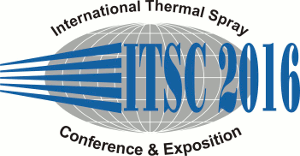
|
4645 |
|
Wednesday, May 11, 2016, Room 3G 1:40 PM Modeling & Simulation II |
|
Thermal conductivity in suspension sprayed thermal barrier coatings: Modeling and experiments |
|
Mohit Gupta / University West, Sweden Chamara Kumara / University West, Sweden Per Nylén/ University West, Sweden A. Ganvir*/ University West, Sweden |
|
In recent years, Suspension Plasma Spraying (SPS) has been shown as a promising process to produce strain tolerant coatings for thermal barrier coating applications in gas turbine engines. The porous columnar coating microstructure generated by SPS provides the strain tolerance and low thermal conductivity to these coatings. However, the highly porous structure is vulnerable to crack propagation, especially near the topcoat-bondcoat interface, where high stresses are generated due to thermal expansion mismatch and oxide growth during operating conditions. A topcoat layer with high toughness near the topcoat-bondcoat interface could thus be beneficial to reduce the stresses. In this work, a bilayer coating system was fabricated by SPS using yttria stabilised zirconia which consisted of a dense first topcoat layer which could provide the necessary toughness followed by a porous columnar structured layer which could provide the necessary strain tolerance. The objective of this work was to study the effect of such a bilayer system on lifetime by experiments and modelling. Lifetime was examined by thermal cyclic fatigue and thermal shock testing. Fundamental relationships between coating microstructure and stresses generated during lifetime testing were studied by modelling. The results indicate that the bilayer system seems superior to a single layer system. |